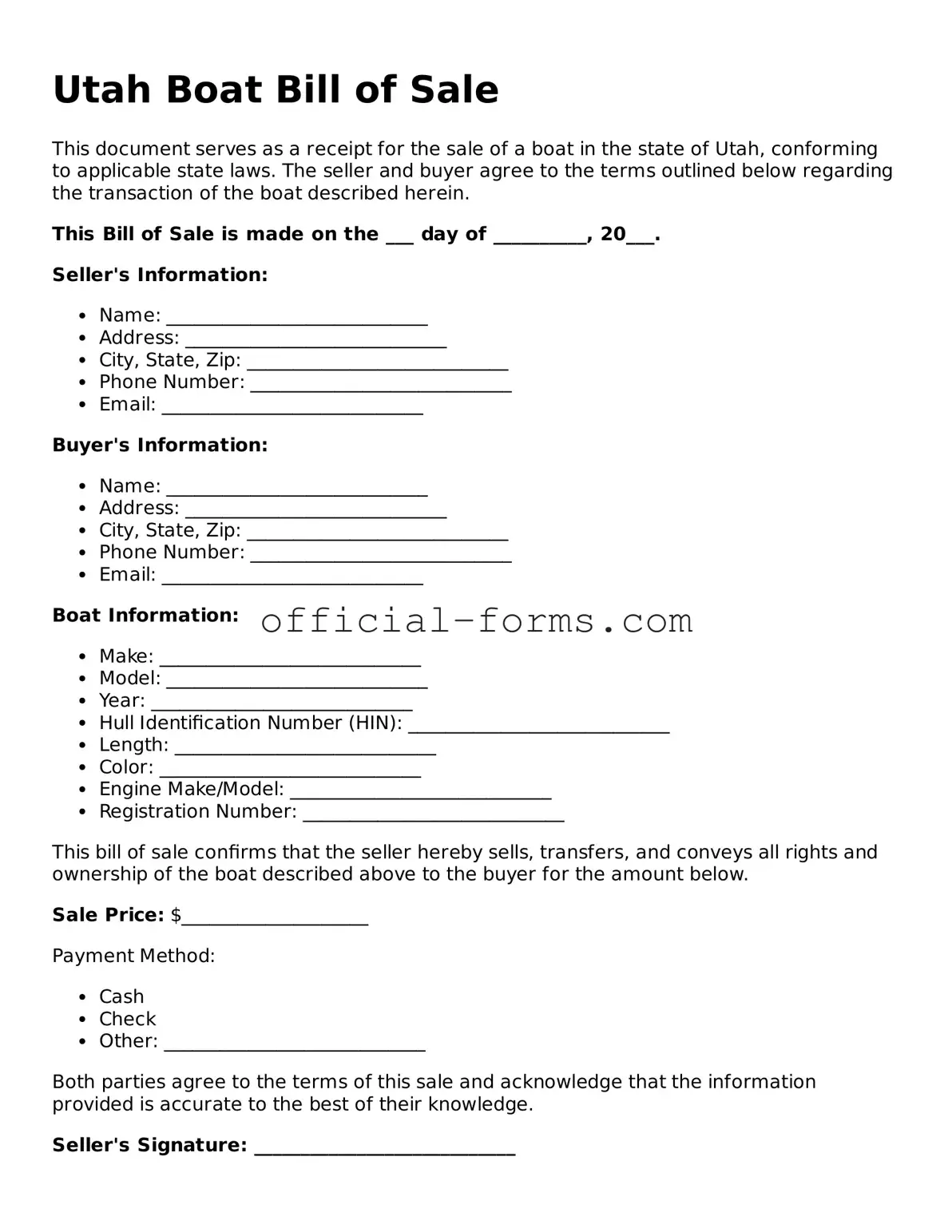When purchasing or selling a boat in Utah, completing the Boat Bill of Sale form accurately is crucial. However, many individuals make mistakes that can lead to complications down the road. Understanding these common pitfalls can help ensure a smooth transaction.
One frequent error is failing to include all necessary information. The form requires specific details about the boat, such as its make, model, year, and hull identification number. Omitting any of this information can create confusion and may lead to disputes later. Buyers and sellers should double-check that every relevant detail is included.
Another common mistake is neglecting to provide accurate contact information. Both parties should ensure their names, addresses, and phone numbers are correct. This information is vital for any future communication regarding the sale, and inaccuracies can hinder this process.
Additionally, some individuals forget to include the sale price. This detail is essential for both parties, as it establishes the value of the transaction. Without it, the form may be considered incomplete, and the transaction could face legal challenges.
Many people also overlook the need for signatures. Both the buyer and seller must sign the form to validate the sale. A missing signature can render the document invalid, leading to potential issues in ownership transfer.
Not providing the date of the transaction is another mistake that can complicate matters. Including the date is important for record-keeping and can help clarify any disputes regarding the timing of the sale.
Some individuals fail to have the form notarized when required. While notarization is not always necessary, certain situations may call for it, particularly if the boat is being financed. Notarizing the document can add an extra layer of legitimacy to the transaction.
Another oversight is using outdated forms. Laws and regulations can change, so it is important to ensure that the most current version of the Boat Bill of Sale form is being used. Using an outdated form can lead to compliance issues.
People sometimes make the mistake of not keeping a copy of the completed form. After the transaction, both parties should retain a copy for their records. This can serve as proof of the sale and may be needed for future reference, especially if any disputes arise.
Lastly, some individuals may rush through the process without thoroughly reviewing the completed form. Taking the time to carefully read through all the information can help catch any errors before submitting the document. A little diligence can prevent significant headaches later on.
